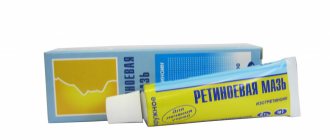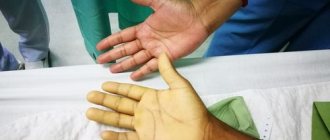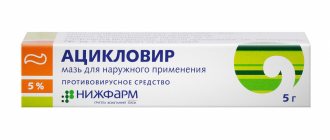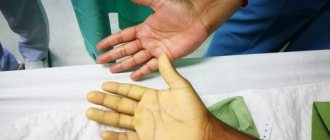Gentamicin-AKOS ointment external 0.1% 15 g x1
Trade name: Gentamicin-AKOS (Gentamicin-AKOS)
International name: Gentamicin&, (Gentamicin)
Pharmacological group: antibiotic-aminoglycoside
Pharmacological group for ATC: D06AX07. Gentamicin
Pharmacological action: antibacterial
Description:
The substance is a white powder or porous mass with a creamy tint. Easily soluble in water, practically insoluble in ethanol.
Pharmacodynamics:
Broad-spectrum bactericidal antibiotic from the aminoglycoside group. It binds to the 30S subunit of ribosomes and disrupts protein synthesis, preventing the formation of a complex of transport and messenger RNA, while erroneous reading of the genetic code and the formation of non-functional proteins occur, polyribosomes are split and lose the ability to synthesize protein (bacteriostasis). Unlike other antibiotics, aminoglycosides have a bactericidal effect - in high concentrations they reduce the barrier functions of cell membranes and cause the death of microorganisms.
Highly effective against bacterial skin infections caused by Staphylococcus spp., Streptococcus spp., Proteus vulgaris, Escherichia coli, Pseudomonas aeruginosa, Enterobacter aerogenes.
Pharmacokinetics:
When used externally, it is practically not absorbed. From large areas of the skin surface, damaged (wound, burn) or covered with granulation tissue, absorption occurs quickly. When using cream it is absorbed faster than when using ointment.
Indications for use:
Bacterial infections of the skin and soft tissues caused by sensitive microflora - pyoderma (including gangrenous), superficial folliculitis, furunculosis, sycosis, paronychia.
Infected: dermatitis (including contact, seborrheic and eczematous), ulcers (including varicose), wounds (including surgical, sluggish), burns (including plants), insect bites , skin abscesses and cysts, acne vulgaris, secondary bacterial infection in fungal and viral skin infections.
Contraindications:
Hypersensitivity (including a history of other aminoglycosides).
Carefully:
Myasthenia gravis, parkinsonism, botulism (aminoglycosides can cause disruption of neuromuscular transmission, which leads to further weakening of skeletal muscles), dehydration, renal failure, neonatal period, prematurity, old age,
pregnancy, lactation period.
Dosage regimen:
Externally. A thin layer of ointment or cream is applied to the affected area 3-4 times a day. The ointment is used to treat dry skin infections (including those associated with eczema or psoriasis), and the cream is used to treat weeping lesions due to primary skin infections or secondary infections of the sebaceous glands (including pustular acne, infected seborrheic dermatitis). If necessary, apply a bandage.
A sponge for local use is implanted into purulent wounds after their surgical sanitation.
Side effects:
Allergic reactions: local - skin rash, itching, skin hyperemia, burning sensation, rarely generalized - fever, angioedema, eosinophilia.
When absorbed from large surfaces, systemic effects may develop.
Overdose:
Symptoms: decreased neuromuscular conduction (respiratory arrest).
Treatment: adults are administered intravenously anticholinesterase drugs (prozerin), as well as Ca2+ preparations (CaCl2 10% 5-10 ml, calcium gluconate 10% 5-10 ml). Before administering proserin, atropine is first administered intravenously at a dose of 0.5-0.7 mg, the pulse is expected to increase, and after 1.5-2 minutes 1.5 mg (3 ml of 0.05% solution) of proserin is administered intravenously. If the effect of this dose turned out to be insufficient, the same dose of proserine is re-administered (if bradycardia appears, an additional injection of atropine is given). Children are administered Ca2+ preparations. In severe cases of respiratory depression, mechanical ventilation is necessary. Can be eliminated using hemodialysis (more effective) and peritoneal dialysis.
Special instructions:
With prolonged use, resistance may develop.
When applied to large surfaces of the skin, the possibility of a resorptive effect must be taken into account, especially in patients with chronic renal failure.
If there is no therapeutic effect within 1 week, you should consult your doctor.
Description connected via INN
Instruction update date 10/27/2015
Manufacturer: Sintez OJSC, Russia
Registration certificate holder: Sintez OJSC, Russia
Release form: ointment for external use 0.1%, aluminum tubes
Composition: gentamicin sulfate 100 mg [in terms of gentamicin] - 100 g
Dispensing conditions: by prescription
Shelf life: 3 years
State data registration: P N002192/01 dated November 20, 2008
Registration certificate status: valid
Pharmaceutical article number: FSP 42-3691-08
Buy Gentamicin ointment 0.1% 15g in pharmacies
Gentamicin Buy Gentamicin in pharmacies DOSAGE FORMS ointment 0.1%
MANUFACTURERS Sintez AKO JSC (Russia)
GROUP Antibiotics - aminoglycosides
COMPOSITION Active substance - Gentamicin.
INTERNATIONAL NON-PROPENTED NAME Gentamicin
SYNONYMS Garamycin, Gentamicin-Akos, Gentamicin-K, Gentamicin-Ferein, Gentamicin sulfate, Gentina, Gencin, Septopal
PHARMACOLOGICAL ACTION Antibacterial. Effective against gram-positive and many gram-negative bacteria (including Pseudomonas aeruginosa, Proteus, Escherichia coli, staphylococci, etc.). It binds to the 30S subunit of ribosomes and disrupts protein synthesis, preventing the formation of a transport and messenger RNA complex (bacteriostasis). In high concentrations, it reduces the barrier functions of cytoplasmic membranes and causes the death of microorganisms. It is poorly absorbed from the gastrointestinal tract. The maximum plasma concentration after injection is reached after 60 minutes. Antimicrobial concentrations in the blood remain for 8-12 hours. Under normal conditions, it does not penetrate the BBB. It is excreted predominantly unchanged by the kidneys.
INDICATIONS FOR USE Infectious diseases caused by sensitive microorganisms: pneumonia, lung abscess, peritonitis, sepsis, meningitis, osteomyelitis, endocarditis, purulent infections, kidney and urinary tract infections.
CONTRAINDICATIONS Hypersensitivity, acoustic neuritis, severe renal failure, uremia.
SIDE EFFECTS Hearing and balance impairment, kidney damage, headache, nausea, vomiting, convulsions, muscle weakness, changes in the cellular composition of peripheral blood (anemia, leukopenia, thrombocytopenia, granulocytopenia), increased activity of liver transaminases, hyperbilirubinemia, allergic reactions (skin itching, hives).
INTERACTIONS Incompatible with other oto- and nephrotoxic drugs. Strengthens (mutually) the effect of carbenicillin, benzylpenicillin and cephalosporins. Loop diuretics increase ototoxicity, muscle relaxants - the likelihood of respiratory paralysis. Do not mix with other products in the same syringe.
METHOD OF APPLICATION AND DOSAGE For pyoderma, folliculitis, furunculosis, etc. Prescribe an ointment or cream containing 0.1% gentamicin sulfate. Lubricate the affected areas of the skin 2-3 times a day. The course of treatment is 7-14 days.
OVERDOSE No information available.
SPECIAL INSTRUCTIONS Restrictions on use: Pregnancy (only for health reasons), infancy, impaired renal function.
STORAGE CONDITIONS List B. Store in a place protected from light, at room temperature.
Gentamicin-Akos instructions for use
Clinical and pharmacological group: Aminoglycosides Pharmacotherapeutic group: antibiotic - aminoglycoside
Dosage form: ointment for external use
Composition of 100 g of ointment contains: Active substance: gentamicin sulfate (in terms of gentamicin) – 0.1 g Excipients: solid petroleum paraffin – 5.0 g, medical vaseline – up to 100 g.
ATX code [D06AX07]
Pharmacological properties: Broad-spectrum bactericidal antibiotic from the group of aminoglycosides. Binds to the 30S subunit of ribosomes and disrupts protein synthesis, preventing the formation of a transport and information ribonucleic acid complex, resulting in erroneous reading of the genetic code and the formation of non-functional proteins; polyribosomes are broken down and lose their ability to synthesize protein (bacteriostasis). Unlike other antibiotics, aminoglycosides have a bactericidal effect - in high concentrations they reduce the barrier functions of cell membranes and cause the death of microorganisms. Highly effective against bacterial skin infections caused by Staphylococcus spp., Streptococcus spp., Proteus vulgaris, Escherichia coli, Pseudomonas aeriginosa, Enterobacter aerogenes.
Pharmacokinetics: When used externally, it is practically not absorbed. From large areas of the skin surface, damaged (wound, burn) or covered with granulation tissue, absorption occurs quickly.
Indications for use: Bacterial infections of the skin and soft tissues caused by sensitive microflora - pyoderma (including gangrenous), superficial folliculitis, furunculosis, sycosis, paronychia. Infected: dermatitis (including contact, seborrheic and eczematous), ulcers (including varicose), wounds (including surgical, sluggish), burns (including plants), insect bites , skin abscesses and cysts, acne vulgaris; secondary bacterial infection in fungal and viral skin infections.
Contraindications: Hypersensitivity (including a history of other aminoglycosides).
Use during pregnancy: not indicated
Directions for use and dosage: Externally! A thin layer of ointment is applied to the affected area 3-4 times a day. The course of treatment is 7-14 days. The duration of treatment is determined by the doctor. The ointment is used to treat dry skin infections (including those associated with eczema or psoriasis). If necessary, apply a bandage.
Release form Ointment for external use 0.1%. 15 g in aluminum tubes. Each tube with instructions for use is in a cardboard pack.
Storage conditions: List B. At temperatures from 8°C to 15°C. Keep out of the reach of children.
Shelf life: 3 years. Do not use after the expiration date stated on the package.
Conditions for dispensing from pharmacies: by prescription
Gentamicin-AKOS
Trade name: Gentamicin-AKOS (Gentamicin-AKOS)
International name: Gentamicin&, (Gentamicin)
Pharmacological group: antibiotic-aminoglycoside
Pharmacological group for ATC: D06AX07. Gentamicin
Pharmacological action: antibacterial
Description:
The substance is a white powder or porous mass with a creamy tint. Easily soluble in water, practically insoluble in ethanol.
Pharmacodynamics:
Broad-spectrum bactericidal antibiotic from the aminoglycoside group. It binds to the 30S subunit of ribosomes and disrupts protein synthesis, preventing the formation of a complex of transport and messenger RNA, while erroneous reading of the genetic code and the formation of non-functional proteins occur, polyribosomes are split and lose the ability to synthesize protein (bacteriostasis). Unlike other antibiotics, aminoglycosides have a bactericidal effect - in high concentrations they reduce the barrier functions of cell membranes and cause the death of microorganisms.
Highly effective against bacterial skin infections caused by Staphylococcus spp., Streptococcus spp., Proteus vulgaris, Escherichia coli, Pseudomonas aeruginosa, Enterobacter aerogenes.
Pharmacokinetics:
When used externally, it is practically not absorbed. From large areas of the skin surface, damaged (wound, burn) or covered with granulation tissue, absorption occurs quickly. When using cream it is absorbed faster than when using ointment.
Indications for use:
Bacterial infections of the skin and soft tissues caused by sensitive microflora - pyoderma (including gangrenous), superficial folliculitis, furunculosis, sycosis, paronychia.
Infected: dermatitis (including contact, seborrheic and eczematous), ulcers (including varicose), wounds (including surgical, sluggish), burns (including plants), insect bites , skin abscesses and cysts, acne vulgaris, secondary bacterial infection in fungal and viral skin infections.
Contraindications:
Hypersensitivity (including a history of other aminoglycosides).
Carefully:
Myasthenia gravis, parkinsonism, botulism (aminoglycosides can cause disruption of neuromuscular transmission, which leads to further weakening of skeletal muscles), dehydration, renal failure, neonatal period, prematurity, old age,
pregnancy, lactation period.
Dosage regimen:
Externally. A thin layer of ointment or cream is applied to the affected area 3-4 times a day. The ointment is used to treat dry skin infections (including those associated with eczema or psoriasis), and the cream is used to treat weeping lesions due to primary skin infections or secondary infections of the sebaceous glands (including pustular acne, infected seborrheic dermatitis). If necessary, apply a bandage.
A sponge for local use is implanted into purulent wounds after their surgical sanitation.
Side effects:
Allergic reactions: local - skin rash, itching, skin hyperemia, burning sensation, rarely generalized - fever, angioedema, eosinophilia.
When absorbed from large surfaces, systemic effects may develop.
Overdose:
Symptoms: decreased neuromuscular conduction (respiratory arrest).
Treatment: adults are administered intravenously anticholinesterase drugs (prozerin), as well as Ca2+ preparations (CaCl2 10% 5-10 ml, calcium gluconate 10% 5-10 ml). Before administering proserin, atropine is first administered intravenously at a dose of 0.5-0.7 mg, the pulse is expected to increase, and after 1.5-2 minutes 1.5 mg (3 ml of 0.05% solution) of proserin is administered intravenously. If the effect of this dose turned out to be insufficient, the same dose of proserine is re-administered (if bradycardia appears, an additional injection of atropine is given). Children are administered Ca2+ preparations. In severe cases of respiratory depression, mechanical ventilation is necessary. Can be eliminated using hemodialysis (more effective) and peritoneal dialysis.
Special instructions:
With prolonged use, resistance may develop.
When applied to large surfaces of the skin, the possibility of a resorptive effect must be taken into account, especially in patients with chronic renal failure.
If there is no therapeutic effect within 1 week, you should consult your doctor.
Description connected via INN
Instruction update date 10/27/2015
Manufacturer: Sintez OJSC, Russia
Registration certificate holder: Sintez OJSC, Russia
Release form: ointment for external use 0.1%, aluminum tubes
Composition: gentamicin sulfate 100 mg [in terms of gentamicin] - 100 g
Dispensing conditions: by prescription
Shelf life: 3 years
State data registration: P N002192/01 dated November 20, 2008
Registration certificate status: valid
Pharmaceutical article number: FSP 42-3691-08






